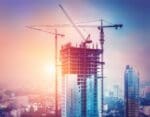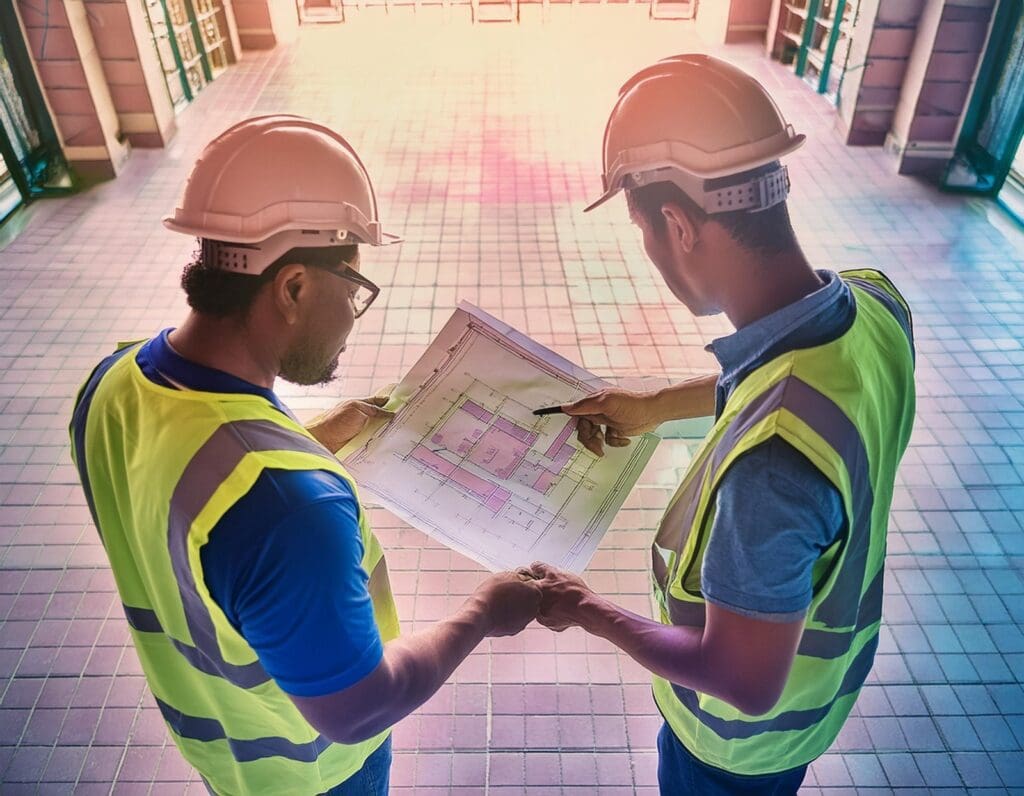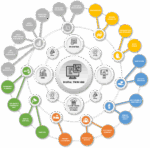
Built to Last: How BIM Drives Long-Term Value for Existing Facilities
It’s common for teams to lean on Building Information Modeling (BIM) during the design and construction phases of a project.
But what’s less obvious? BIM’s significant impact on building operations and beyond.
Case in point: Take the new Scripps Health La Jolla Tower II, a nine-story, 433,000-square-foot hospital that’ll serve San Diego beginning in 2025. During the project, the design and construction models were linked using BIM. This allowed building stakeholders to streamline real-time design updates, enhance coordination, and gather valuable information for future facility management.
That last piece is important.
Too often, facility management (FM) is viewed purely as a reactive cost center for back-office expenses. But when you introduce BIM to FM, you unlock the ability to operate your current facilities in proactive new ways that reduce expenses and align with the business outcomes owners care about most.
Leveraging BIM Data Leads to Better Business Outcomes
The traditional approach to facility management and operations has looked a lot like driving a car without a working speedometer or gas gauge. You can still move forward without that data, but you don’t know if you’re going to suddenly run out of gas or get slapped with a speeding ticket.
BIM provides owners and facility managers with valuable new ways to steer building operations by revealing the data they need, when they need it.

Today, BIM is an umbrella for valuable new technology that thrives on data, such as Digital Twin solutions. As soon as you start to collect data in strategic ways, you build the foundation for your own Digital Twin: a dynamic, real-time replica of the physical facility.
The more data you collect, the more sophisticated your Digital Twin capabilities become. Digital Twins and similar technology work to bring facility data to life in 3D and let you:
- See where equipment is and how it’s performing
- Tie all equipment to related documentation and platforms
- Aggregate data and analyze it in a central location
This means you can see exactly what’s going on within your facility and understand how to maintain it properly. You have good data and good, strategic next steps for mitigating facility issues.
Why does this matter? Because a building must be operationally savvy to stay profitable. When things shut down, you lose revenue. Leveraging BIM results in outcomes like longer lifecycles, more energy efficiency, optimized staffing, and less downtime — all of which contribute to a healthier bottom line.
How BIM Improves Facility Management in Six Key Areas
There’s no question that data is essential to modern facilities management.
Take New York City’s Local Law 97 as one example. A moving benchmark for energy usage, the law requires New York companies who commit to sustainability to stay within specific energy thresholds — or risk being fined.
Here’s the kicker though: The city updates the benchmark through an RSS feed every five minutes. Without BIM technology like a Digital Twin, companies must base their decisions on clunky Excel sheets with dated numbers they’ve pulled manually from multiple data sources. With a Digital Twin monitoring the facility, the latest requirements are automatically pulled in and implemented in real-time, avoiding fines and adhering to local law.
This is just one of dozens of use cases. I’ll explain how the benefits of BIM flow to everything from capital improvements to compliance.
Capital Improvements
BIM drives the ability to standardize your approach to capital improvements and ensure that the decisions you make are validated.
Every day, I watch clients make enormous investments. The best investments are ones that continue to drive value during facility management and create a flywheel for success. Too often I see the data from completed capital improvement projects get handed off from the construction team to the operations team — then put on a back shelf to gather dust. That’s when owners struggle.
Instead, strategic owners lean on BIM to standardize the format for all incoming data and populate the facility management platforms they use. When you add in the right data ingredients up front, you improve your facility management tenfold.
For example, say you have an existing office facility, and you renovate the conference rooms. With BIM and Digital Twins, the data standardization you put in place earlier lets you:
- Receive information from the renovation project in the identical format as the aggregated data you already have
- Automatically populate new data into your facility management systems
- Use that data to make optimum capital improvement decisions for the next project
The alternative? You ask someone to spend weeks pulling data from various sources, translating it, and re-entering it in a usable format — a time-consuming and error-prone process.
Maintenance
There is incredible value in knowing where all of your facility equipment is located and the tools you need to support it.
Picture a Variable Air Volume (VAV) box — a piece of mechanical equipment up above the ceiling — that needs maintenance. Then imagine that your maintenance team shows up on-site with an eight-foot ladder and a toolbox…but they really need a 12-foot ladder. Cue an unnecessary waste of time and manpower that you’ll still get charged for. When your team uses BIM, you’re able to:
- Be alerted to which piece of equipment needs maintenance
- Identify the equipment location
- Access the owner’s manual for required tools and repair instructions
Without BIM, your team will always be doing maintenance reactively and scrambling to find a physical owner’s manual that may or may not be out of date.
Asset Management
BIM also simplifies asset management thanks to transparent data on equipment performance, use patterns, and cost.
If you have a piece of equipment on-site and the vibration patterns go under or over the normal thresholds logged in your Digital Twin, your team could be immediately alerted that the metrics are off base — and can investigate the asset before the equipment fails.
In addition to preventative asset management like what I described above, BIM also enables owner teams to:
- Track how well the equipment is performing over time
- View a log of lifetime maintenance on the equipment
- See what the equipment originally cost, and what you’ve spent over its lifecycle
All of these extend the life of the asset and enable better decisions in the future.
Space Planning
Could you confidently state the total square footage of your latest project in the next five minutes? What about the square footage in your entire portfolio?
I’ve seen many companies flying blind when it comes to the finer details of their facilities, and
BIM is a strategic asset when it comes to space planning for current facilities and future endeavors alike.
For example, in the healthcare space, there are legal ratios that a facility must adhere to when it comes to how much waiting room and exam room square footage you have. As you can imagine, access to accurate data is key for regulated industries (which at this point, is all industries).
Using BIM and Digital Twin technology to achieve a clear knowledge of square footage across multiple facilities gives you the ability to:
- Aggregate information about all of your buildings
- Update your portfolio more strategically and holistically
- Improve your negotiating power with vendors
To make this real, imagine knowing exactly how much of your portfolio uses tile flooring and wanting to upgrade the tile across all of your properties. You can update those areas at the same time using the same vendor, resulting in consistent quality and lower pricing than if you were to chip away at it piece by piece.

Sustainability
Many companies prize sustainability and ESG goals — as do their employees. That said, why wait to share your sustainability achievements annually or quarterly?
BIM-driven insights give you the power to share sustainability progress with your workforce and the public in real time. For example, Digital Twin technology can display for employees and building visitors your monthly carbon emissions and how that number compares to your goals.
BIM can also track energy usage on the portfolio level, giving you the opportunity to:
- Define the sustainability metrics that matter to your team (e.g. electricity usage)
- Track those metrics across one facility and/or your entire portfolio
- Report on how well you are meeting your sustainability goals
When you aggregate your data automatically and report it in a central location, it is infinitely easier to spot sustainability wins and identify areas that need more attention.
Compliance
While sustainability certainly has elements of compliance to it, another hurdle for owners is meeting compliance requirements from government entities like the FDA.
Random inspections and approvals often leave companies in industries like food & beverage, manufacturing, and healthcare scrambling to find key documentation and certificates.
One group I worked with made surgical instruments and had to follow FDA guidelines. The Digital Twin provides them the ability to:
- Maintain a working knowledge of current requirements
- Keep documentation and compliance certificates in one accessible area
- Reduce the timeline for inspections and approvals
What some teams call “hell week,” I’ve seen streamlined into two days. BIM keeps the compliance process smooth, makes you look sophisticated, and lets inspectors move on quickly — keeping your facility operating without delays.

Where to Begin Your Digital Transformation
While the benefits of BIM are clear, knowing where to start isn’t always obvious. At VIATechnik, I work with clients to initiate digital transformation across three areas:
1. Strategy
Setting your strategy is about defining the business goals, gaps, expectations, and use cases that you want BIM and Digital Twin to meet. You want to ensure that all key stakeholders are on the same page with how standardized data will be used and why.
It’s critical to align digital strategy with enterprise and project strategy because you want every technology investment to reap meaningful rewards. Your goal? To avoid a project turning into a two-year investment that loses all its value when everybody walks away.
2. Execution
The next step is to execute on your strategy with pilot projects, putting feedback loops in place to determine what works and what doesn’t work.
You should leave your strategy sessions with a set of clear requirements to provide to your design and construction teams. Next, make sure the incoming data is validated, standardized, and delivered correctly by your teams during handoff. Finally, begin to aggregate and assess the data. This data is your foundational Digital Twin.
With that foundation in place, set up connections to other systems, collect and analyze additional data, and use the insights from that full pool of data to make better facility management decisions.
3. Enablement
Digital transformation projects take time, with returns often taking between 2-10 years to fully realize. It’s so easy to spend all of your money upfront during the implementation stage of BIM, lose focus on the project, and let it fizzle out.
My teammates and I work with clients to keep the long-term vision in mind and ensure they receive the long-term value they’ve invested in. To make this happen though, owners and their teams need to ensure that information stays up to date, new projects are actually executed properly, and data is correctly aggregated.
Ultimately, you want your digital investment to increase in sophistication and value as you build your digital infrastructure brick by brick. This means you will continue to reap value from every facility — not just one individual building.
Operate Better with Better Technology
If you currently deploy BIM as only a design and construction tool, it’s time to branch out and consider it for facility management, too.
When you apply BIM and Digital Twin technologies to building operations, you unlock new levels of value that stretch across all aspects of your facility.
We specialize in leveraging BIM at VIATechnik. For us, it’s the foundation that enables the creation of a comprehensive, lasting digital representation of your facility. Our Digital Twin technology takes this further by creating a dynamic, real-time replica that’s anything but stagnant.
The bottom line is this: When you use data to improve the efficiency and effectiveness of your facilities management, you enable that department to become a value creation asset to the company, not just a cost center
The world of BIM and Digital Twin technology is complicated. We’re here to help if you need a hand bringing order to chaos within your existing facilities.



